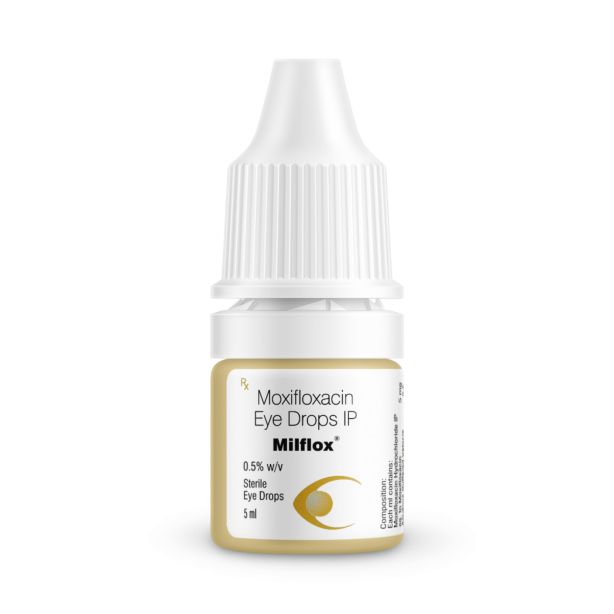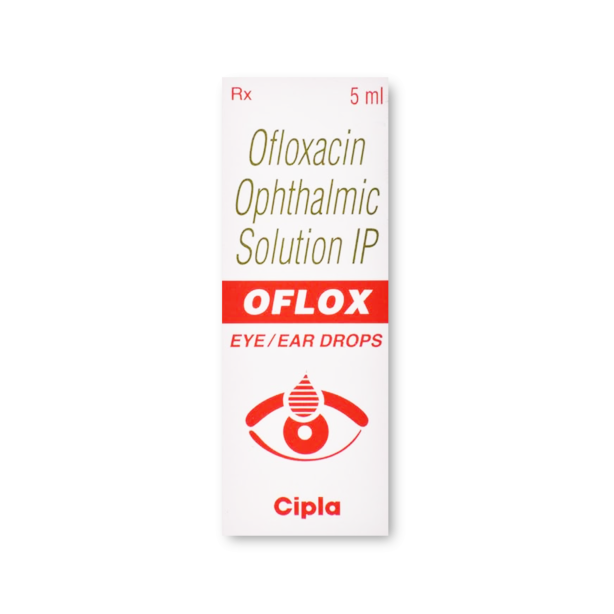Eye pain is a typically uncomfortable and troublesome situation to be in because our eyes are among the most vulnerable and sensitive parts of the body. The pain can feel like a dull ache, a burning sensation, or a sharp, stabbing pain behind the eye. Any discomfort in your eyes can make daily activities, like reading, driving, or using screens, feel impossible.
Some of the causes of eye pain can be harmless, like dryness or muscle strain after a long day at work. At other times, it may signal a deeper underlying problem, such as an infection, nerve inflammation, or even rising eye pressure. The first and most important step is to understand why your eyes hurt so you can get the right treatment and protect your vision in the long run.
In this article, you will take a closer look at 11 common causes of eye pain, explaining how each one affects the eyes and highlighting symptoms that should never be ignored. By the end, you’ll have a clearer understanding of what might be causing your discomfort and when it’s time to seek medical care.
1. Dry Eye
Dry Eye causes eye pain when your eyes can’t produce enough tears or when tears evaporate too quickly. The lack of moisture affects the process of natural lubrication, leading the eyes to become sore and sensitive. Aging, especially after menopause in women, when combined with exposure to dry air, wind, or constant screen use, can trigger this condition.
The pain can feel like a burning, gritty sensation, or a stinging sensation, sometimes accompanied by redness or blurred vision. Using artificial tears, warm compresses, or taking screen breaks can ease the pain, but if discomfort persists, always consult a doctor.
Save up to 90% on your medicine bills

Milflox 0.5% 5 ml

Oflox 5 ml

Mosi Eye Drop

Xinep 5 ml
2. Foreign objects in the eye
Eye pain from foreign objects occurs when dust, sand, or even an eyelash gets into your eye and irritates or scratches the cornea. This leads to sharp, sudden pain and a strong urge to rub your eye, which can make the injury worse.
You can flush out small particles with clean water or sterile saline solution, but if the pain persists or the object remains stuck, seek immediate medical attention to prevent infection and lasting damage.
3. Allergies
Allergies cause eye pain when your immune system reacts to pollen, dust, or pet dander, leading to swelling on the surface of the eye. This inflammation causes the eyes to become itchy, sore, or cause a burning sensation, often accompanied by redness and tearing.
Avoiding allergens, using antihistamine or lubricating eye drops, and applying cold compresses can help ease pain. If symptoms don’t improve, check with your doctor to rule out infection or other causes.
4. Conjunctivitis (Pink Eye)
Conjunctivitis (Pink Eye) causes eye pain when the thin tissue covering the white region of the eye swells. This inflammation makes the surface sensitive, leading to burning, stinging, or gritty discomfort.
The pain often accompanies redness, tearing, or discharge, particularly in cases caused by bacterial or viral infections. Allergic or chemical forms also cause irritation but aren’t contagious. Good hygiene and quick medical consultation are essential for easing the pain and preventing further complications.
5. Glaucoma
Glaucoma results in increasing pressure inside the eye and damages the optic nerve (the nerve that connects your eye to your brain). This buildup, known as Intraocular Pressure (IOP), can cause sudden, severe pain, sometimes accompanied by blurred vision, nausea, or halos around lights.
Untreated Glaucoma can lead to permanent vision loss, so urgent medical attention is crucial. Treatments like eye drops, laser therapy, or surgery help lower the pressure and prevent further damage.
6. Optic Neuritis
Optic Neuritis causes eye pain by swelling the optic nerve. This inflammation causes eye movements to be painful and can result in blurred or dimmed vision.
You can often link this condition to autoimmune diseases, like Multiple Sclerosis (MS), or certain infections. Since eye pain accompanied by vision changes can signal severe nerve damage, immediate medical attention is necessary to protect your sight.
7. Eye surface disorders
Eye surface disorders cause eye pain by affecting the outer layer of the eyes, leading to irritation or a scratchy sensation. Infections or inflammation of the cornea are common triggers that make the eyes feel sore or sensitive to light.
Sometimes, sinus infections can increase pressure around the eyes, worsening the pain. Proper diagnosis and treatment, such as antibiotics or decongestants, help relieve discomfort and prevent complications.
8. Cluster headaches
Cluster headaches cause severe, stabbing pain around or behind one eye. The pain results from the sudden dilation of blood vessels and nerve activation in the head, which can cause the eye to become red, watery, and swollen.
Attacks come in cycles that can last for weeks and are extremely painful. Consult a doctor if you experience this type of eye pain, as treatments such as oxygen therapy, along with prescribed medications, can effectively manage the condition.
9. Eye strain
Eye strain causes eye pain when your eyes become overworked from prolonged screen use, reading, or performing close-up tasks. This constant focus tires the eye muscles, leading to soreness, burning, or a heavy feeling.
Corrective lenses and practicing good posture are effective ways to ease pain and protect eye health. Adjusting screen brightness and using lubricating drops also eases pain and fatigue. Follow the 20-20-20 vision rule, which entails taking a 20-second break every 20 minutes to look at something 20 feet away, as it helps reduce eye strain.
10. Eye injuries
Eye injuries cause eye pain due to trauma from accidents, sports, or chemical exposure. Even minor injuries lead to severe pain, swelling, or vision problems if untreated.
Pain from an eye injury is often immediate and may come with swelling, bruising, or sudden changes in vision. Protect it with a clean covering to prevent permanent damage or infection. Since these symptoms can signal severe damage, prompt medical care is essential.
11. Post-surgical eye pain
Post-surgical eye pain happens when your eyes heal after procedures like Cataract surgery or LASIK (Laser-Assisted In Situ Keratomileusis). The pain occurs due to mild inflammation, dryness, or irritation from small incisions.
It’s usually temporary, but if the pain becomes severe or persistent, it usually indicates complications such as infection or nerve irritation. Always follow your doctor’s aftercare instructions and attend follow-up visits to ensure proper monitoring and recovery.
When to seek medical help
Many minor eye pain issues are manageable, as many home remedies are available. However, specific symptoms require the attention of medical experts to prevent serious complications and preserve eye health.
Prompt medical attention is crucial when experiencing:
- Sudden and severe eye pain
- Vision loss or significant impairment of vision
- Pain after an eye injury
- Redness of the eye accompanied by fluid discharge or swelling
- Headache with eye pain, especially when accompanied by nausea
Early detection and treatment will help prevent permanent eye damage and vision loss. If these symptoms occur, seek treatment immediately to ensure proper management and protect eyesight.
Also read: Doctor You Should Visit For Eye Pain: When to Seek Help
Conclusion
Eye pain can be caused by many different factors, ranging from common, easily treatable issues like Dry Eye or allergies to more serious problems such as Glaucoma or Optic Neuritis. While mild discomfort may improve with rest, hydration, or simple home care, persistent or severe pain should never be ignored.
Understanding the causes of eye pain will help you take the right steps early. This can include using lubricating drops, managing screen time, or seeking prompt medical attention. Protecting your eyes today can make a significant difference in maintaining clear, healthy vision in the long run.
If you experience pain that worsens, affects your vision, or comes with other symptoms like redness or discharge, don’t wait; see an eye specialist as soon as possible. Early diagnosis and proper care ensure that you maintain your vision health and keep your eyes comfortable.

Frequently Asked Questions
What causes pain behind the eye with a headache?
Pain behind the eye accompanied by a headache may be due to migraines, cluster headaches, or sinusitis. In some cases, high eye pressure associated with Glaucoma can trigger it. Make sure that you consult a medical professional for early identification of cases and timely treatment.
What are the causes of eye pain that worsen at night?
Eye pain worsening at night can be caused by Dry Eyes, reduced tear production, nocturnal lagophthalmos (incomplete eyelid closure), increased friction, and contact lens use. Environmental factors and slower nighttime circulation also intensify pain and irritation during sleep.
What are common causes of eye ball pain during movement?
Eyeball pain with movement is commonly associated with Optic Neuritis, sinus infections, eye injuries, or inflammation, such as scleritis. These conditions affect the nerves, muscles, or tissues around the eye, causing discomfort that increases with eye movement.
Can muscle problems cause eye pain?
Yes, overworked eye muscles can cause pain, often due to screen use, reading, or inadequate lighting. It could lead to headaches and fatigue. Proper rest and wearing glasses with corrective lenses can help alleviate symptoms.
How do the causes of eye irritation and pain differ from those of Dry Eye?
Eye irritation pain is often caused by allergens, infections, foreign bodies, or environmental irritants, leading to redness and burning. Dry Eye pain, in contrast, is primarily caused by poor tear quality or insufficient tear production, resulting in friction, soreness, and blurred vision.
When referencing outside resources, GoodrxMedicine always provides full citations. To learn more about the measures we use to maintain the quality of our content, please review our Content Information Policy.











